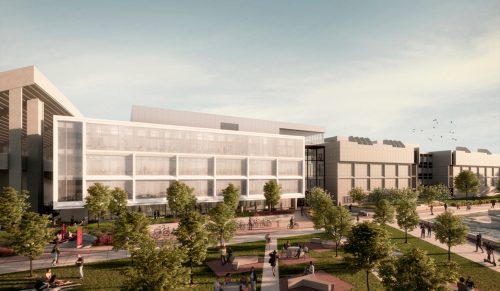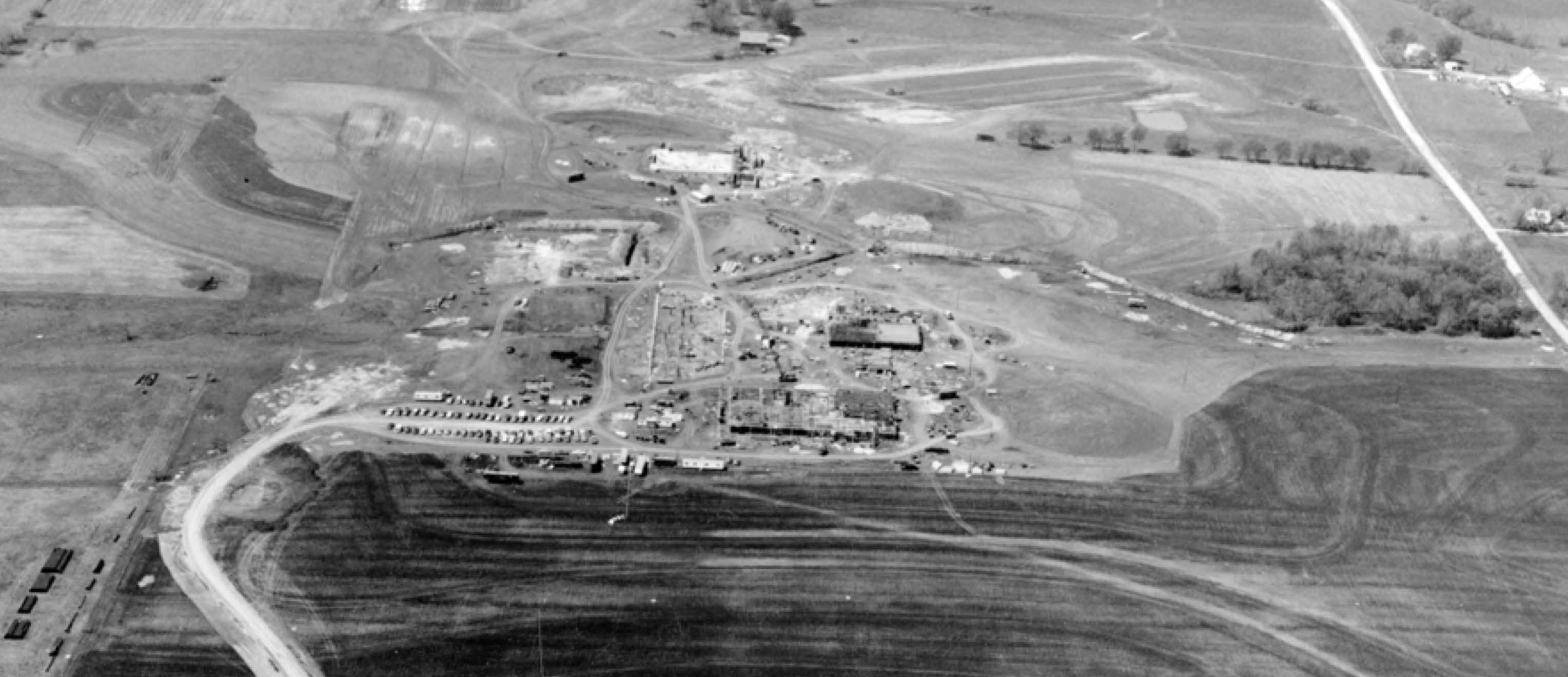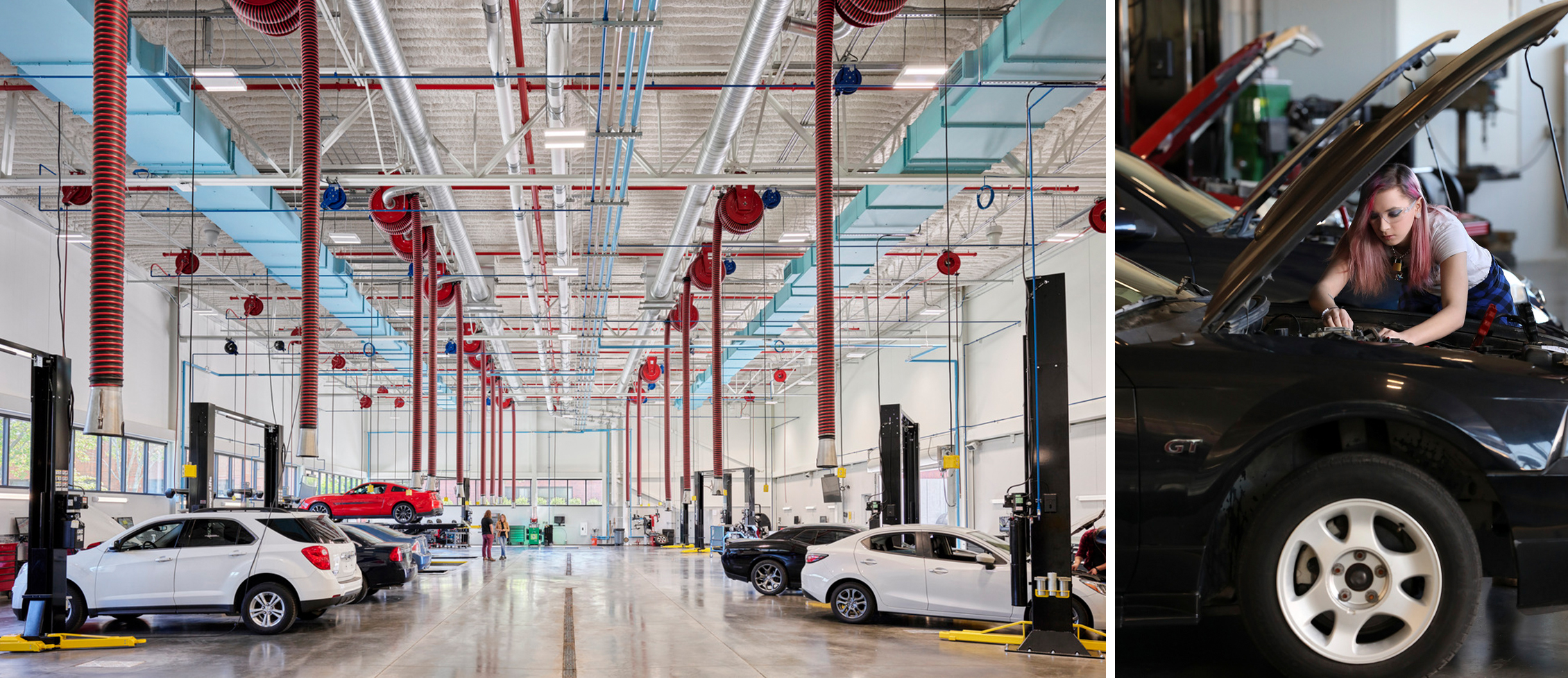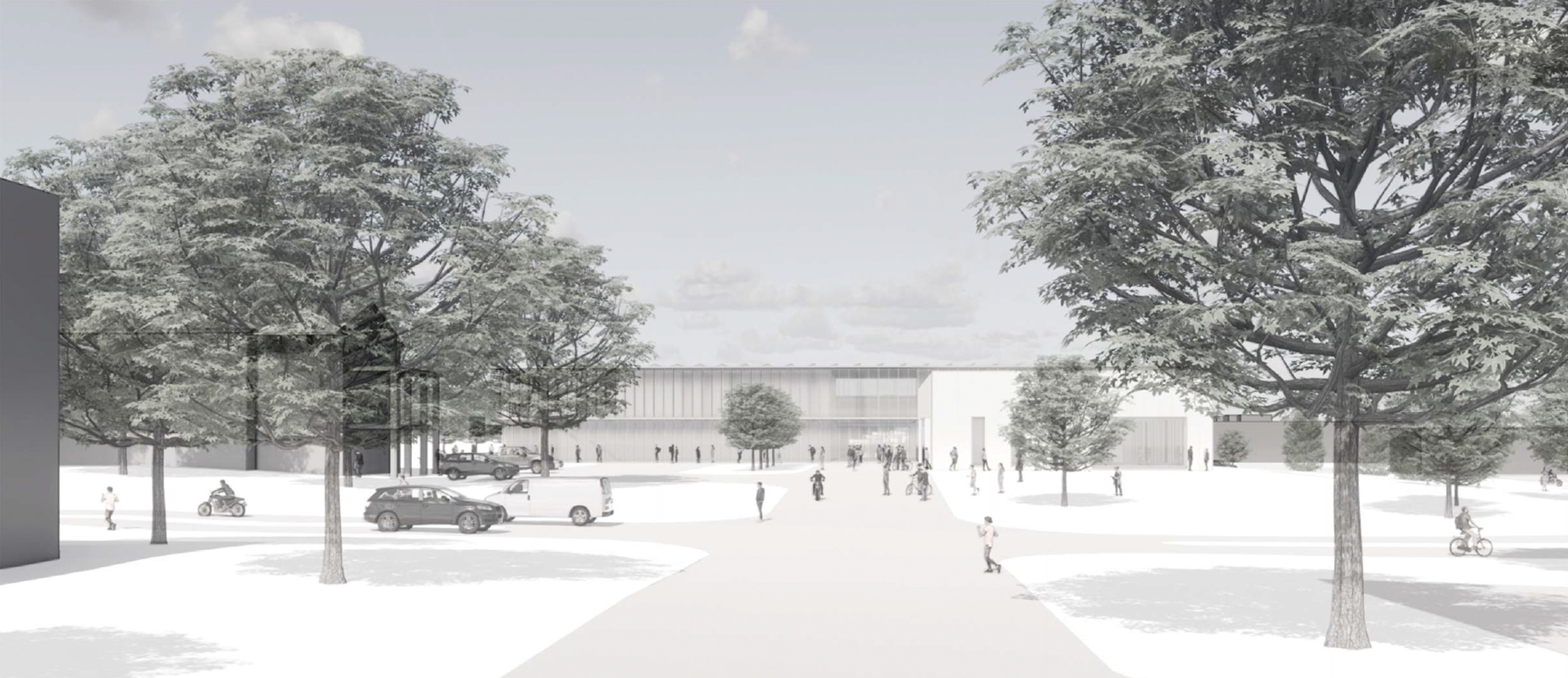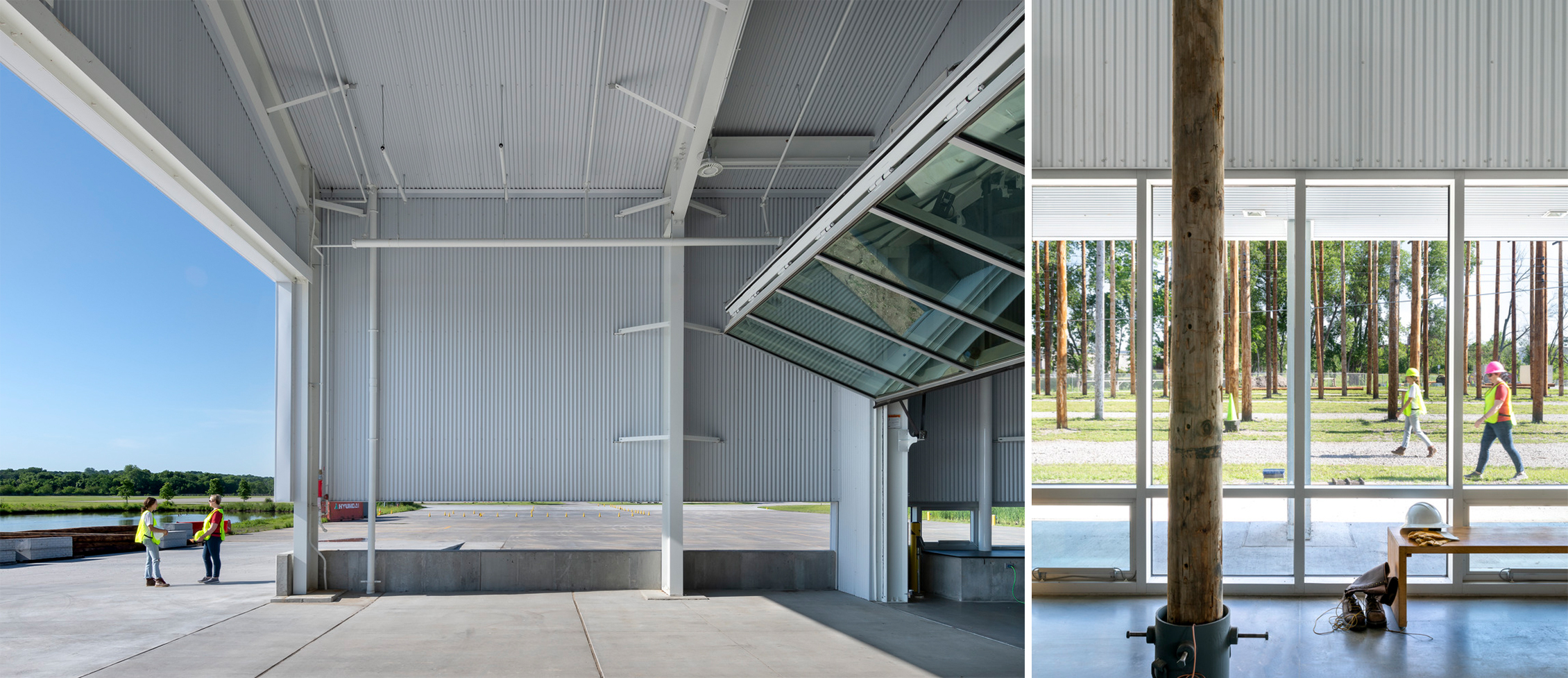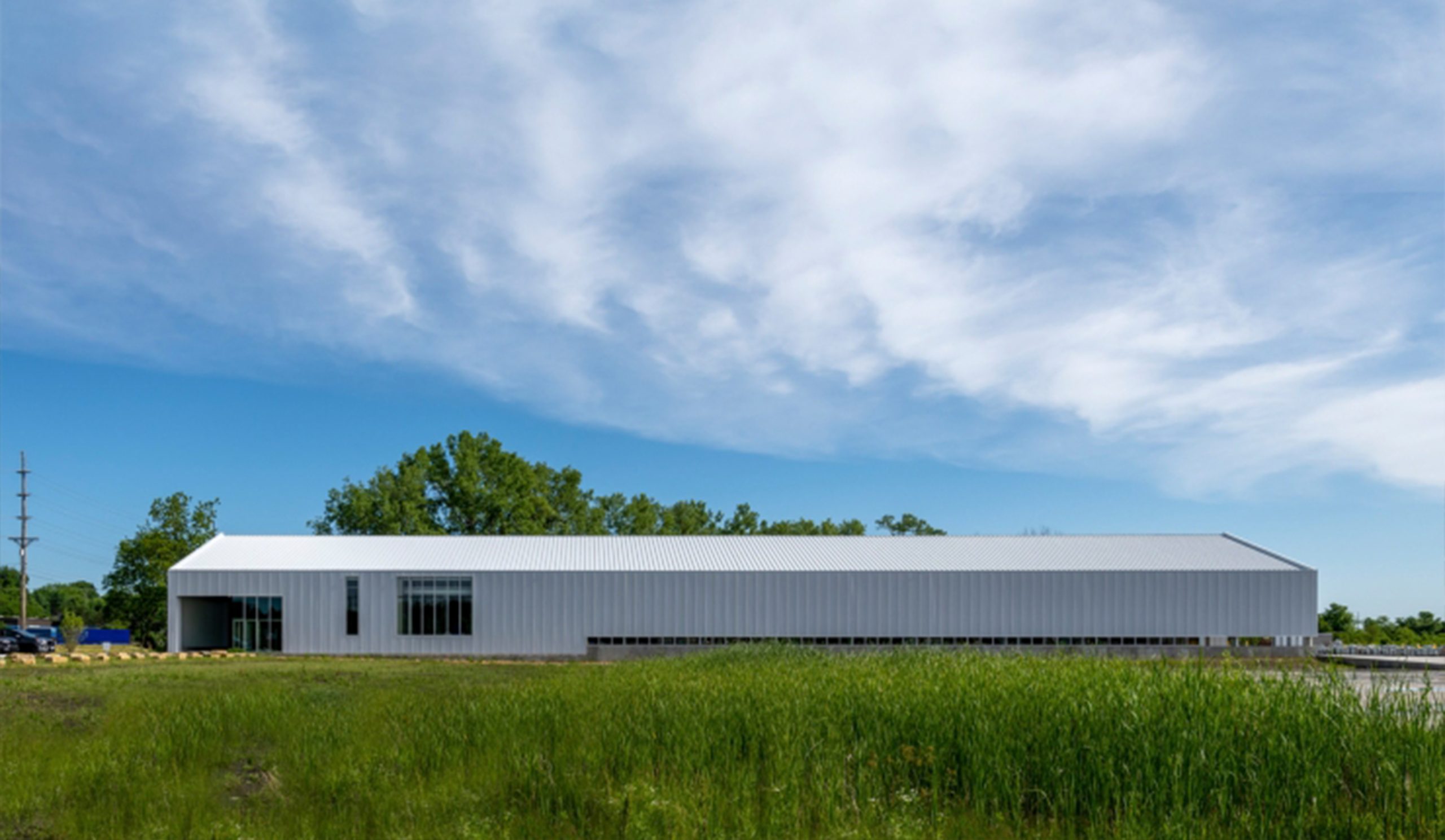
Future-Proofing Education: Community Colleges Invest in Next Generation Critical Workforce by Emphasizing Equality in Education and Career Training
BNIM has partnered with community college campuses across the country to design and transform academic facilities that support and reflect the significant work of these institutions at the forefront of experiential learning. Community colleges have forged new paths for students on their academic and professional journeys, providing flexibility, affordability, and access to education at a time when these core tenets of learning are needed more than ever. BNIM’s recent projects, including Metropolitan Community College Blue River East, Johnson County Community College Career and Technical Education Center, and Southeast Community College New Construction Technologies Center, successfully demonstrate this ethos. Our team presented on this topic at the SCUP 2021 Annual Conference as part of a dynamic educational session focused on The Role of Community Colleges in Future-proofing Education. Click on the header image to watch the session.
The Growth of Community Colleges & Increased Equality in Education
The Kansas City Area Development Council reports that Kansas City enrolls approximately 140,000 students and has 31,000 student graduates enter the workforce each year [1]. Community colleges have redefined the educational system in the U.S. for over a century by improving access to education and training the next generation of skilled workforce professionals. The beginning of the community college system in the U.S. dates back to 1862 with the Land Grant Act, which led to the development of state colleges and universities focused in the fields of agriculture and mechanical arts [2].
Many of these land grant-colleges and universities are still operating today, and a number of them have expanded beyond their initial academic specializations [2]. This development of colleges and universities across the U.S. was the start of improved access to public post-secondary education for many communities.
The development of community colleges experienced growing interest and support from communities, not only for the enhanced opportunities in post-secondary education but also for the positive impact of community colleges on sociocultural growth and community pride [3]. Expansion of the higher education system continued with the Truman Commission Report of 1947 which contributed to the development of a strong network of community colleges that provided a variety of curriculums at an affordable tuition cost [4].
 IMAGE VIA JCCC: JOHNSON COUNTY COMMUNITY COLLEGE WAS SELECTED AS THE FIRST COLLEGE TO BE INCLUDED AS PART OF THE KANSAS COMMUNITY JUNIOR COLLEGE ACT OF 1965, ENVISIONED TO BE JCCC’S NEW HOME BY ITS BOARD OF TRUSTEES DUE TO THE “ACCESSIBILITY, NEARNESS TO THE EXPECTED FUTURE POPULATION CENTER, AND BEAUTIFUL SETTING,”[5].
IMAGE VIA JCCC: JOHNSON COUNTY COMMUNITY COLLEGE WAS SELECTED AS THE FIRST COLLEGE TO BE INCLUDED AS PART OF THE KANSAS COMMUNITY JUNIOR COLLEGE ACT OF 1965, ENVISIONED TO BE JCCC’S NEW HOME BY ITS BOARD OF TRUSTEES DUE TO THE “ACCESSIBILITY, NEARNESS TO THE EXPECTED FUTURE POPULATION CENTER, AND BEAUTIFUL SETTING,”[5].
Career Training as a Critical Workforce
Community colleges have held an important role in the communities they serve, offering career training, transfer classes to four-year institutions, and community-based training such as continuing education. More recently there has been a renewed focus on career training as a critical workforce, vital for health, vibrancy, and longevity of local cities and towns.
Vocational training garnered interest in the early 20th century among students who didn’t (or couldn’t) pursue the prescribed educational path of high school to a four-year institution, mostly followed by students of middle-and upper-class backgrounds at the time. By the ‘70s and ‘80s, however, a stigma had developed that vocational programs were primarily attended by dropouts or underachievers. Legislation in the early 21st century underscored this notion by defunding high school level vocational programs due to perceived under-achieving test scores.
The unintended, although perhaps predicable, consequence of this resulted in a supply gap in what were traditional vocational careers such as Automotive Technology, Welding, HVAC Maintenance, Electrical Maintenance, among others. While it is a nationwide concern, in the Kansas City area alone as of 2019, there were less than 400 completions in those four fields with job openings for an additional 1,200 graduates.
A Path to Future-Proofing Education
Present day career training finds itself at the intersection of technology, communications, and the modernization of all sectors of industry. The previous notion of four-year institutions educating the future white-collar employees and two-year trade schools training the future blue-collar employees is countered instead with careers where everyone needs to be both hands-on and adept in technology, what have been coined as ‘purple-collar’ careers. Below are three facilities that are embracing this understanding as they invest in dynamic facilities and resources that focus on training the next generation of students and the future workforce.
Case Study 01
Johnson County Community College – Career and Technical Education Center
Johnson County Community College embarked on an ambitious Master Plan in 2016, in part to analyze opportunities to become a leader in the region and to help solve this supply gap within the workforce. JCCC sought to provide facilities that were innovative, flexible, and functional and to ensure that decisions were made with one goal in mind: students’ needs are front and center as they invest in the future.
BNIM helped execute two of the major projects identified as critical – a new home for the Fine Arts & Design Studios (FADS) on the east side of campus and a new home for the Career and Technical Education Center (CTEC) on the west side. The construction of these two projects would be succeeded by the renovation, and backfill, of the existing building into a new home for their welding and construction technologies program.
It was crucial to develop spaces that would keep the campus relevant and support the students’ needs such as hands-on learning environments, collaboration and gathering spaces, fabrication labs, and spaces to interact with faculty. For the CTEC, spaces were designed with maximum flexibility and environmental sustainability for future growth. The labs and classrooms were located along the corridors to allow for people circulation as well as equipment circulation. The systems were put on display and color coded to allow for faculty to use the building as an experiential learning tool – literally allowing them to point and trace a pipe from start to end point. Labs were given priority along major circulation routes, complete with glass faced garage doors, to ensure that the work the students were doing was able to be on display.
All of this resulted in students and faculty that felt a renewed sense of pride in their work and were able to see that the college and community valued the work that they were doing.
Case Study 02
Southeast Community College: New Construction Technologies Center
BNIM and Sinclair Hille Architects are working with Southeast Community College (SCC) to design a new Construction Technologies Center (CTC) in Milford, NE. The Construction Technology programs on the Milford campus have a tradition of excellence and are critical components in SCC’s mission to offer the highest quality programs and services to meet student, employer, and community demand throughout the College’s entire 15-county service area. This workforce is a critical component to the state’s economy and facilitating growth in the construction industry. This is demonstrated by the fact that 89% of SCC graduates are working in their field of study and 91% are working in Nebraska.
Thus, the CTC is an important new facility for the campus and community at-large and is envisioned to help bring together students and faculty from six key programs – Land Surveying/Civil Engineering, Design and Drafting Technology, Building Construction Technology, Electrical Technology, Plumbing Technology, and HVAC/Refrigeration Technology – which are currently dispersed in different buildings on campus.
The facility will aim to meet the evolving needs of the College’s different Construction Technology programs through program-specific instructional spaces focused on classrooms, class labs, and student and faculty collaboration spaces. These spaces are designed to provide hands-on learning opportunities and resources for workforce instructional curriculum, including labs for heating, cooling, refrigeration, plumbing, carpentry, masonry, and concrete. In these instructional spaces, students will be able to receive hands-on instruction from both lectures and instructor demonstrations which they can then apply in practice.
Some key considerations for the project will also include enhancing pedestrian connectivity within the campus, replacement parking for students and visitors, and ample site circulation around the facility to support maneuverability of materials needed.
Case Study 03
Metropolitan Community College: Blue River East
BNIM collaborated with Metropolitan Community College (MCC) to provide architectural services for the College’s Blue River East Campus, which celebrated its ribbon cutting opening ceremony in early 2022. In response to MCC’s goals to transition programs from an existing campus to three new locations, the Blue River East Campus establishes a new home for the Great Plains OSHA Education Center as well as MCC’s CDL, Forklift, Linework and Logistics programs. The site has been transformed to serve 800+ students, addressing a high demand for specialized training programs and technical skills in the Midwest region, strengthening Kansas City’s future workforce, and making a positive impact on the local economy.
MCC recognized this project as a unique opportunity to invest in and showcase these programs – which are often located in introverted buildings – within a modern and daylight-filled facility. Emphasis on signage, transparency, and creating useful, inviting, and generous exterior spaces in and around the envelope establish MCC’s Blue River East campus identity. A pre-engineered metal building serves as the primary structure, and the design team helped MCC to work within materials and budget parameters to implement pragmatic and creative design solutions.
The building is thoughtfully divided into fully conditioned classroom space, office space, flexible-use space, and a kitchenette; high bay heat-only space; and exterior training areas in order to better accommodate programmatic needs as well as lower the facility’s EUI (energy use intensity). The building has been identified as net zero energy-ready with the potential future installation of photovoltaic panels. Resiliency was a primary focus for this project given its location on an 100-year flood plain. In response, the design team worked with MCC to analyze resiliency design options including the building cladding, electrical systems locations, and structural systems. Building systems are intentionally elevated to remove them from flood plain proximity, and storm water is managed and maintained on-site.
MCC Blue River East is an example of maximizing resources to create a hands-on learning and training environment that provides useful and engaging spaces for the community of students and faculty.
SOURCES:
[1] KC AREA DEVELOPMENT COUNCIL
[2] COMMITTEE ON THE FUTURE OF THE COLLEGES OF AGRICULTURE IN THE LAND GRANT UNIVERSITY SYSTEM. NATIONAL RESEARCH COUNCIL.
[3] JOLIET JUNIOR COLLEGE
[4] VIRGINIA COMMUNITY COLLEGE SYSTEM
[5] JOHNSON COUNTY COMMUNITY COLLEGE
